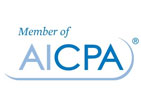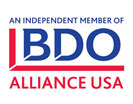 Understanding your business’s financial health is essential for long-term success. QuickBooks® offers a powerful reporting tool suite that can provide critical insights to support decision-making and help you comply with accounting and tax rules.
Understanding your business’s financial health is essential for long-term success. QuickBooks® offers a powerful reporting tool suite that can provide critical insights to support decision-making and help you comply with accounting and tax rules.
Accrual-basis QuickBooks users should get in the habit of reviewing the following five reports monthly to keep their finances in check and be proactive instead of reactive when challenges arise. Note: Before running reports, confirm that QuickBooks is set to display accrual-basis (not cash-basis) results.
1. The profit and loss statement: Scoring your monthly performance
The profit and loss statement summarizes your business’s revenue and expenses over a given period. Also known as the income statement, it serves as a “scorecard” of whether your business is profitable and how income compares to spending.
This report can also highlight trends. Compare the current month to prior months or the same period last year to evaluate performance over time. Monthly reviews allow you to track whether revenue is increasing, expenses are under control, and margins are healthy.
QuickBooks allows you to break down this report by business segment, location, or class. A customized breakdown shows which parts of your business drive profitability — and those that may be underperforming.
2. The balance sheet: Taking a snapshot of financial health
The balance sheet shows your financial position at a specific point. It lists assets, liabilities, and equity. This helps you understand what your business owns versus what it owes. Compare your current balance sheet with previous periods to identify any material changes. Reviewing this report monthly helps evaluate whether your business is:
- Maintaining adequate working capital,
- Investing in long-term assets, and
- Managing debt responsibly.
It can also reveal imbalances — such as unpaid liabilities or aging inventory — that may need management’s attention. With QuickBooks, you can filter or group the report by class or department to gain deeper insights into how different parts of your business affect your overall financial standing.
3. Accounts receivable aging summary: Staying on top of customer payments
Unpaid invoices can severely impact cash flow. The accounts receivable aging summary categorizes outstanding customer balances by how long the invoices have been due. QuickBooks uses the due date fields from recorded invoices to group receivables into 30-, 60-, 90- and 90-plus-day buckets. Reviewing this report each month allows you to quickly identify which customers are behind on payments and how much is at risk. Timely follow-up on overdue invoices can significantly improve cash inflows and reduce bad debt write-offs.
QuickBooks users with multiple customer types or sales channels can customize this report by customer type, region, or sales rep. This helps pinpoint trends in slow-paying clients or potential areas for process improvement in billing or collections.
4. Accounts payable aging summary: Managing cash outflows
The accounts payable aging summary shows outstanding bills and categorizes them based on the due date field in QuickBooks. This report helps ensure that bills are paid on time, avoiding late fees and protecting vendor relationships. Reviewing payables monthly also helps manage cash flow more strategically. For instance, you can defer some payments without penalty, while others may need to be prioritized to maintain supply chains or essential services.
QuickBooks users with complex supply chains can tailor this report to show spending by vendor category. This pinpoints where your money is going and whether there may be opportunities to consolidate or renegotiate terms.
5. Statement of cash flows: Following the money
The statement of cash flows tracks how cash moves in and out of your business. Cash flows are reported under the following categories:
- Operating activities,
- Investing activities, and
- Financing activities.
A profitable business may still struggle to pay bills if its cash flow is weak. That’s why it’s so important to review this report regularly. It helps you understand whether your operations generate enough cash to sustain the business and whether large outflows, such as equipment purchases or debt repayments, are straining liquidity.
QuickBooks lets you view this report over time. For instance, viewing it on a month-by-month or rolling 12-month basis can reveal seasonal trends and help you anticipate upcoming cash needs. This is especially useful when making strategic plans for capital investments, hiring, and financing.
Beyond standard reports: Customizing for deeper insights
While the standard versions of these five reports are helpful, tailoring them to your specific needs can yield even more valuable insights. With just a few clicks, you can filter reports by class, customer, vendor, or location. You can also add or remove columns, sort data differently, or apply custom date ranges. These options make it easier to understand business unit performance.
To save time and ensure consistency in your review process, QuickBooks allows you to “memorize” customized reports and schedule them to be automatically generated and emailed to your management team each month. You can also use the management reports feature to bundle multiple reports into a branded, presentation-ready package. This can facilitate internal meetings and discussions with lenders or investors.
Small habits lead to big insights
Reviewing monthly financial reports doesn’t have to be overwhelming. After you make journal entries in QuickBooks, the software handles most of the legwork. However, if you’re unsure how to customize your reports or need help interpreting them, contact us. We can help you leverage QuickBooks to its fullest potential.
For more information on the above article or any outsourced bookkeeping services, contact Chris Earnest by calling (334) 887-7022 or leaving us a message below.







